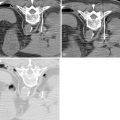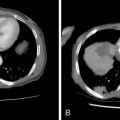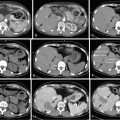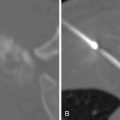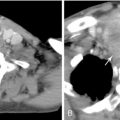Colon cancer—an overview
Colorectal cancer (CRC) is the fourth most frequently diagnosed cancer, the second leading cause of cancer-related death in the United States, and recent studies estimate that 100,000 new cases of colon cancer and 40,000 of rectal cancer will occur annually. During the same time, 50,000 people will die from CRC. Within the past 30 years, the incidence of CRC has decreased from 60.5 to 46.4 per 100,000 people. Similarly CRC-related mortality has decreased by 35% in the past 15 years.
Approximately 20% of colon cancer cases are associated with familial clustering. Genetic susceptibility to colorectal cancer includes inherited syndromes such as Lynch syndrome (hereditary nonpolyposis colorectal cancer/HNPCC) and familial adenomatous polyposis (FAP). Colorectal cancer is one of the most common solid tumors and is responsible for approximately 10% of cancer-related death in the Western world. Treatment of primary colorectal cancer with surgical resection, combined with chemotherapy and radiotherapy, may be effective in many patients. About 10%–25% of patients present with synchronous liver metastases at the time of primary diagnosis and another 20%–25% of patients developed metachronous liver metastases. Surgical resection of distant CRC metastases may result in long-term survival and even cure in a subset of selected patients. The 5-year survival rates after resection of all detectable liver metastases can reach up to 40%. However, only 25% of the patients with colorectal liver metastases are candidates for liver resection, whereas the majority remain unresectable. Chemotherapy and newer therapies can extend patient survival of patients with unresectable colorectal liver metastases. Several image-guided procedures have evolved within the past 10 years that allow the management of liver metastases in nonresectable patients and those that have recurred after resection. These local therapies include local tumor ablation, hepatic arterial chemotherapy (HAC), selective internal radiation therapy (SIRT), as well as traditional arterial chemoembolization (TACE) and the more recent use of irinotecan-loaded drug-eluting beads (DEBIRI-TACE). To date, TACE and SIRT have been mostly used in patients who have failed several prior chemotherapy regimens (salvage therapies). Small randomized controlled trials showed that the addition of SIRT or DEBIRI to systemic chemotherapy result in longer disease-free and overall patient survival when compared to chemotherapy only.
In this chapter, we will elaborate on appropriate image-guided local therapies based on disease distribution and patterns. The chapter will review the indications and results of image-guided percutaneous local tumor ablation and intraarterial therapies in the management of colon cancer liver metastases (CLM).
Introduction
The natural history of CLM varies significantly based on the pattern of disease distribution. As described in a surgical review of the mid-1980s, solitary CLM, if left untreated, had survival rates of about 70% and 45% at 1 and 2 years, respectively. If the disease was widespread in one lobe or two lobes, that is, multiple unilobar or bilobar lesions, 1- and 2-year survival rates varied from 65% to 30% and 40% to 15%, respectively. Survival rates at 3 and 5 years were significantly decreased for either solitary CLM or multiple unilobar and bilobar disease to 5% or less. Thirty years later, in 2011, survival rates have dramatically improved to higher than 60% at 2 years and 35% at 5 years. This improvement is attributed to the availability of new chemotherapeutic agents along with improved imaging for early tumor detection as well as aggressive surgical debulking and locoregional therapies including image-guided interventions.
National Comprehensive Cancer Network (NCCN) guidelines emphasize the value of systemic chemotherapy in the management of CLM. Although NCCN guidelines indicate the value of surgery (or ablation) for well-selected patients, they do not endorse the widespread use of intraarterial locoregional therapies largely because of their lower level of evidence (mostly level 3, small numbers of level 2, and sparse numbers of level 1 studies). This discordance between NCCN guidelines and the 2002 FDA approval in particular for SIRT with resin microspheres for CLM stems from the fact that with the exception of a handful of small randomized controlled trials showing better progression-free survivals for the patients using SIRT in addition to chemotherapy to date, there is no large randomized controlled study conducted for loco-regional therapies to document a statistically significant overall survival benefit.
Ablation in the treatment of colorectal metastases
Ablative technologies involve the delivery of tumoricidal energy directly within the tumor in order to destroy the target tumor and a surrounding margin of normal liver while minimizing the impact on the rest of the nonaffected liver. Advantages include less physiological stress, since ablative therapies do not require open surgery but can be applied percutaneously under imaging guidance or laparoscopically.
These advantages allow the treatment of patients unfit or unwilling to undergo major abdominal surgery and those who are poor candidates for general anesthesia. Ablative therapies minimize the destruction of healthy liver tissue as compared to hepatic resection. This is an important parameter for patients with low volume of healthy functioning parenchyma such as those with underlying cirrhosis or steatohepatitis from prolonged chemotherapy exposure as well as those that have previously undergone extensive liver resection. Image-guided ablation has also been used as a salvage therapy for recurrences after prior hepatectomy. , The “test of time” approach using percutaneous ablation was proposed by Livraghi et al. in 2003 to allow the biology of the disease to express itself and to maintain quality of life in patients with liver metastases from colorectal cancer waiting for surgery. The concept is that many patients may be able to avoid unnecessary surgery by undergoing ablation of liver metastases while waiting for hepatic metastasectomy. In summary, this approach allows the disease to express its biology. Patients with indolent disease and a successful ablation as well as those with very aggressive and prolific disease who develop nonresectable metastases during follow-up after ablation are spared unnecessary and morbid resection. This concept offers an interesting management approach with the use of the least morbid therapy (ablation) first, in a setting that benefits the patient and monitors for progression of disease. As such, this approach could be used if there was ever an attempt to undertake a randomized controlled trial between ablation and resection for CLM.
The most common indications for image-guided ablation are:
- 1.
Limited number (arguably less than four) and size (arguably less than 5 cm in largest diameter) of hepatic metastases in patients that cannot undergo or refuse surgery.
- 2.
The ideal tumor for percutaneous ablation is a solitary lesion with largest diameter up to 3 cm. There is no absolute number of tumor eligibility but most series agree that patients with more than four simultaneous liver metastases are not good candidates for image-guided percutaneous ablation.
- 3.
A tumor size up to 5 cm may be acceptable for ablation although multiple overlapping ablation will be required to achieve complete ablation with a sufficient surrounding margin (ideally a 1-cm margin all around the tumor should be created).
Contraindications:
- 1.
No safe access of the ablation needle to the tumor despite protective maneuvers such as hydrodissection.
- 2.
Uncorrectable coagulopathy.
- 3.
A relative contraindication is the inability of a patient to undergo general anesthesia.
Ablation modalities
Radiofrequency ablation
Radiofrequency ablation (RFA) involves the administration of energy with a frequency of <900 kHz into tissue via needle electrodes. Transmission of current through tissue causes ionic agitation, resulting in temperature elevation to lethal levels over 60°C and cellular death by coagulation necrosis. One limitation of this technique is tissue desiccation when temperature reaches 100°C, resulting in high tissue impedance, limiting the amount of energy that can be delivered in the tumor, preventing expansion of the lethal temperature within tissue and thus the volume of tissue that is exposed to temperatures high enough to cause cell death. Another well-established and important limitation of thermal ablation and in particular radiofrequency ablation is heat dissipation when applied near blood vessels. This phenomenon called the “heat sink effect” occurs when ablating tumors near blood vessels and is the result of cooling by the flowing blood at the nearby tumor edge. This compromises the effect of RFA when treating tumors larger than 3 mm in size near vessels, resulting in a relatively high rate of local tumor progression. The highest success rates of ablation are achieved in patients with solitary CLM or patients with a small number of metastases <3 cm in largest diameter. As with surgical resection, the aim of RFA is to achieve a clear margin around the target tumor. In recent publications, it was clearly shown that the size of ablation margin correlates with local tumor progression. A margin of at least 5 mm as demonstrated 4–8 weeks after ablation was associated with best local tumor control and lower local tumor progression rates. It has also been indicated that a 1-cm margin should be the gold standard for ablation whenever safe and ideally it should be demonstrated by imaging immediately after ablation. Table 14-1 summarizes series of RFA in the management of CLM. 7,8,16-38
| Author | Mean Number of Metastases | Modality | 1-Year Survival (%) | 3-Year Survival (%) | 5-Year Survival (%) | Median Survival (Months) |
|---|---|---|---|---|---|---|
| De Baere et al | 1.8 | Percutaneous RFA | 81 | |||
| Solbiati et al | 1.6 | Percutaneous RFA | 33 | 30 | ||
| Stippel et al | 5.6 | Intraoperative RFA | 18 | |||
| Cheng et al | 2.3 | Laparoscopic RFA | 25.4 | |||
| Pawlik et al | 3.0 | Resection + Percutaneous RFA | 37.3 | |||
| Abdalla et al | Resection + RFA | 43 | ||||
| Berber et al | 3.2 | Percutaneous RFA | 28.9 | |||
| Ellias et al | 2.4 | Resection + RFA + hemo | 92 | 47 | 36 | |
| Gillams et al | 4.1 | Percutaneous RFA | 91 | 28 | 25 | 38 |
| Hildebrand et al | 3.5 | Percutaneous RFA | 92 | 42 | 28 | |
| Amersi et al | 3.3 | Percutaneous RFA | 29.7 | |||
| Lermite et al | 2.0 | Percutaneous RFA | 90 | 54 | ||
| Abritabile et al | 3.1 | Percutaneous RFA | 88 | 57 | 4 | |
| Suppiah et al | 1.9 | Percutaneous RFA | 75 | 7 | 23.2 | |
| Siperstein et al | 2.8 | Percutaneous RFA | 20.2 | 18.4 | 24 | |
| Sorensen et al | 3.3 | Percutaneous RFA | 87 | 46 | 32 | |
| Terraz et al | 1.8 | Percutaneous RFA | 84 | |||
| Berber et al | 1.0 | Laparoscopic RFA | 20.6 | 30 | 20.5 | |
| Veltri et al | 1.6 | Percutaneous RFA | 79 | 38 | 22 | 31.5 |
| Park et al | 1.2 | Percutaneous RFA | 36 | |||
| Gleisner et al | 2.0 | Resection + RFA | 92.3 | 51.1 | 28.3 | 38.1 |
| Lee et al | RFA | 46.5 | 40 | |||
| Knudsen et al | Percutaneous RFA | 26 | 34 | |||
| Hur et al | RFA | 60 | 25.5 | |||
| Sofocleous et al | 1.4 | Percutaneous RFA | 91 | 41 | 31 |
Cryoblation
Cryoablation utilizes the administration of liquid nitrogen or argon to a probe tip, causing rapid cooling of tissue and the formation of intracellular ice crystals. Subsequent damage to the adjacent microvasculature disrupts tissue perfusion, leading to ischemia. Tissue death occurs by freezing at temperatures reaching −40°C. Tissue death can be achieved by repetitive cooling–thawing cycles. One of the advantages of this procedure is the formation of visible ice-balls that can be detected by various imaging modalities and correlates with the tumor-ablation margins. Similarly to RFA, the major limitation of cryoablation is the heat sink effect as explained before that can lead to high recurrence rates. Reports of cryoshock when early-generation devices were used in the treatment of liver metastases have impacted the widespread use of this modality in the treatment of liver tumors. Reported median 5-year survival after cryoablation of liver tumors ranges between 22 and 24 months. When using cryoablation with surgery and specifically when cryotherapy was applied to the resection margins in order to extend the depth of the resection, a 26%–44% 5-year survival was reported. Table 14-2 summarizes study series using cryoablation in the treatment of CLM.
| References | No. of Patients | Mean No. of Metastases | Follow- Up (Months) | 1-Year Survival (%) | 3-Year Survival (%) | 5-Year Survival (%) | Median Survival |
|---|---|---|---|---|---|---|---|
| Korpan et al | 63 | NA | 60 | NA | 60 | 44 | NA |
| Finlay et al | 75 | 2 | NA | NA | 80 | NA | 29 |
| Gruenberger et al | 86 | 2 | 39 | NA | 83 | NA | 32 |
| Sheen et al | 41 | NA | NA | 83 | 68 | NA | 32 |
| Rivoire et al | 24 | 2.9 | 23 | 92 | 58 | NA | 39 |
| Yan et al | 172 | 4.2 | NA | 89 | 41 | 19 | 28 |
| Kerkar et al | 56 | NA | 54 | NA | 43 | 22 | 30 |
| Brooks et al | 86 | 4 | 18 | 85 | 43 | 19 | 33 |
| Seifert et al | 55 | 2.4 | 24 | NA | NA | 26 | 29 |
| Chen et al | 61 | 3.38 | 16 | 87 | NA | 36 | 26 |
| Niu et al | 124 | 4.1 | NA | 84 | 43 | 24 | 29 |
| Paganini et al | 49 | 5.1 | 39.3 | 87 | 43 | 23 | 31 |
| Bageacu et al | 53 | 2.6 | NA | 86 | 33 | NA | NA |
| Kornprat et al | 20 | 1.7 | 21.1 | NA | NA | NA | NA |
Microwave ablation
Microwave utilizes high-frequency waves in the range of 900 MHz and 2.4 GHz. These high-frequency waves cause water molecules to oscillate, creating friction, causing heat and tissue destruction by coagulation necrosis similar to RFA. The theoretical advantage of this therapy over RFA is that it is less prone to heat-sink phenomenon, there is more controlled tissue ablation because microwave ablation (MWA) is not affected by charring of tissue, and it can achieve similar or larger areas of ablation faster than RFA. MWA and cryoablation unlike RFA do not require any grounding pads to be placed on the patient’s body. Table 14-3 summarizes the results of series using MWA for the treatment of CLM.
| Author series | Mean No. of Metastases | 1-Year Survival (%) | 2-Year Survival (%) | 3-Year Survival (%) | 4-Year Survival (%) | 5-Year Survival (%) | Median Survival (Months) |
|---|---|---|---|---|---|---|---|
| Seki et al ] | 1.0 | 24.2 | |||||
| Shibata et al | 4.1 | 71 | 57 | 14 | 27 | ||
| Liang et al | 2.0 | 91.4 | 60 | 46.4 | 29 | 20.5 | |
| Tanaka et al | 2.2 | 80 | 51 | 17 | 28 | ||
| Ogata et al | 4.0 | 32 | 43 |
Results
The precise role of ablation in the management of CLM may vary based on institutional and local preferences. There is, however, an overall recognition that this modality may offer good local control and for small tumors that can be ablated completely with clear margins, it may be able to provide results similar to those of surgery. In a systemic review of 36 series, the 1-, 3-, and 5-year survival rates for patients treated with RFA alone varied between 75%–93%, 7%–60%, and 18%–63%, respectively. Median survival ranged from 4 to 40 months and local recurrence rate ranged from 8% to 38%. In general, it appears that smaller numbers of tumors, smaller size of treated tumors, absence of extrahepatic disease, and no involvement of the lymph nodes at initial excision as well as longer time between initial diagnosis to the development of liver metastasis correlate with best outcomes. ,
Imaging follow-up of ablation therapies
Different approaches in measuring response rates developed, including the World Health Organization (WHO) criteria, the Response Evaluation Criteria in Solid Tumors (RECIST) and the Positron Emission Evaluation Response Evaluation Criteria in Solid Tumors (PERCIST).
A well-recognized limitation of existing criteria for tumor response to treatment applies when evaluating response to any locoregional treatment. This is in particular the case for ablated tumor where the ablation zone is by definition larger than the target tumor. For the proper evaluation of response to treatment and the early detection of local tumor progression a postablation scan at 4–8 weeks is considered the new baseline for future comparisons. By definition, the ablation defect is larger than the treated tumor and any future comparisons to detect local tumor progression are made to this scan. Subsequent scans at 2–4 months are recommended to detect local, near local, and distant disease progression. The natural evolution of an ablation defect is depicted in Figure 14-1 . Despite the use of positron emission tomography–computed tomography (CT) and implementation of the new PERCIST criteria assessment of treatment response with ablation modalities still remains suboptimal. It would be useful if a new set of criteria could be implemented similarly to the proposed modified RECIST (mRECIST) criteria, recently described for the evaluation of treatment response of hepatocellular carcinoma. , Having said that, the concept of measuring viable tumor response in hepatocellular carcinoma by showing a significant change in tumor enhancement during the arterial phase of dynamic CT or magnetic resonance imaging (MRI) may be also applied for CLM. Although the enhancement pattern of CLM is different from that of HCC, a response to treatment and measurement of enhancing residual tumor versus nonenhancing treated CLM could be achieved by measuring Hounsfield units in the zone of ablation necrosis or in the territory of the targeted arterial distribution.


Stay updated, free articles. Join our Telegram channel

Full access? Get Clinical Tree




